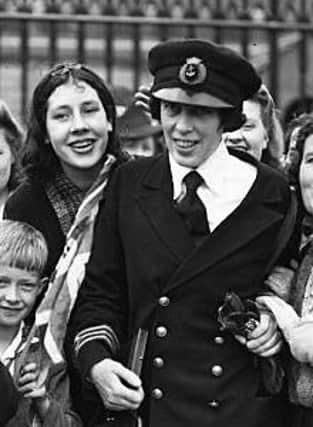Victoria Drummond - Britain's first female marine engineer


Victoria Drummond was the first female marine engineer in the UK and the first British woman to serve as chief engineer with the Merchant Navy. As a result of her courage under fire at sea during World War II, she was awarded a MBE in 1941 and was the first woman to receive the Lloyd's War Medal for Bravery at Sea.
Born into a well-connected upper class Perthshire family in 1894, her father was a groom in waiting to Queen Victoria and her maternal grandfather was a Conservative peer. Named after the reigning monarch, the queen was one of Drummond's godmothers.
Advertisement
Hide AdAdvertisement
Hide AdWomen of privilege in early 20th century Britain were not expected to work, far less seek out employment in an industry that was then exclusively male. The young Victoria and her sisters enjoyed working on the family's Megginch Castle estate but few could have predicted it would lead her to an illustrious career at sea. Drummond's interest in the way things worked meant she paid frequent visits to the nearby engineering works of Robert Morton and Sons in Errol, where she quizzed the owner on how best to enter the industry.
In 1915, at the age of 21, Drummond's parents encouraged their daughter to pursue her own career. She chose marine engineering and was apprenticed to a Perth-based firm in 1916, where her foreman, a former ship's chief engineer named Mr Malcolm, greatly encouraged her career.
Following night school at Dundee Technical College, later to become Abertay University, Drummond secured a position at the Caldeon shipyard on the River Tay. She completed her apprenticeship in 1920 and would spend the next nine years serving aboard merchant ships sailing around the world.
By 1927 she had qualified as a second engineer yet could only find work as fifth engineer or below. As Drummond would later recall in her memoirs, not all marine engineers appreciate having a woman onboard. While she was respected by her crewmates, she regularly encountered discrimination from her superiors. This attitude was highlighted by her repeated attempts to qualify as a chief engineer. Despite sitting the exam on numerous occasions, the Board of Trade failed her every time.
By the time Britain declared war on Germany in 1939, Drummond had spent a decade onshore working for a London-based business established by her sisters. The outbreak of hostilities made her determined to return to sea. Despite her second engineer qualification, and numerous glowing professional references, she was rejected by every British company she approached.
Dejected, she was advised by a former crewmate to apply for a foreign vessel instead and secured a position as second engineer on the Cyprus-registered Har Zion. This opening led to a better-paid role onboard the Panama-registered SS Bonita in 1940. Weeks later the ship was attacked by enemy aircraft in the mid-Atlantic. Drummond took control of the engine room and kept the ship moving despite suffering injuries. She was later commended for her bravery and leadership. "Her conduct was an inspiration to the ship's company, and her devotion to duty prevented more serious damage to the vessel" The Times reported in 1941. Drummond received an MBE for devotion to duty and a Lloyd's medal for bravery at sea.
After the war, Victoria Drummond worked as a superintendent in shipyards in Dundee and Burntisland but soon returned to sea. From 1952 to 1957 she sailed as second engineer on various ships, and from 1959 until her retirement in 196 she finally sailed as chief engineer.
Drummond died in 1978 having become the first female member of the Institute of Marine Engineers. She was buried at Megginch Castle in Perthshire, the country home where she was born.